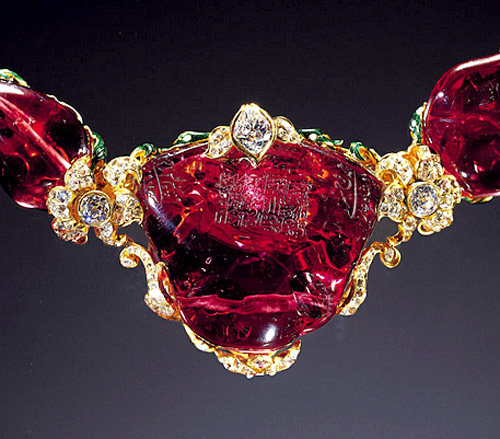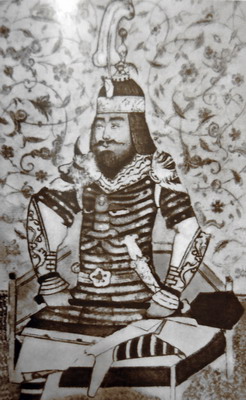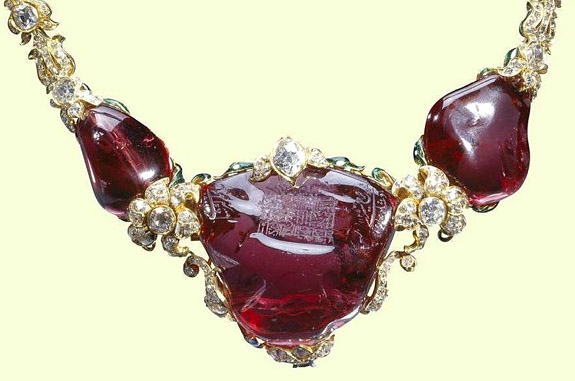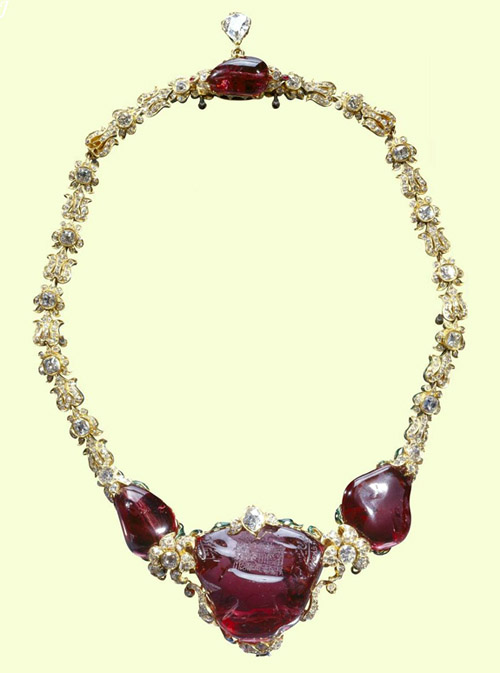In honor of July’s official birthstone, we’d like to share the bizarre story of the "Timur Ruby," one of the world’s largest and most historic “rubies.” We use the word ruby in quotes, because the massive unfaceted 352.5-carat gem, which resides among the British Crown Jewels, was exposed in 1851 as a red spinel. Oops.

The Timur Ruby gets its name from the greatest conqueror of the 14th century. Hailing from what is now Uzbekistan, Timur’s military conquests were vast, spanning from Mongolia in the east and the Mediterranean in the west, to India in the south and Russia in the north. After successfully capturing Delhi in 1398, Timur left India six months later weighed down with a bounty of jewelry and gemstones. One of those stones was the Timur Ruby.

The unfaceted stone has a semi-polished flat face that is inscribed in Arabic script with the names of four Mughal emperors and two Persian rulers who possessed the stone. These included emperors Jahangir, Shah Jahan, Aurangzeb and Farrukhsiyar, and the rulers Nadir Shah and Ahmad Shah. The inscriptions are dated between 1612 and 1771.

In 1849, when the British East India Company took over the Punjab region (which is now eastern Pakistan and northern India), it also took possession of the Timur Ruby and the 186-carat Koh-i-Noor diamond from ruler Ranjit Singh.
The East India Company presented the Timur Ruby to Queen Victoria as a gift in 1851. The Queen was so excited about the gift that she wrote the following in her journal: “The [Timur Ruby] is the largest in the world, therefore even more remarkable than the Koh-i-Noor!”
Later that same year, advancements in gemology and mineralogy led to the determination that the “largest ruby in the world” was just a big spinel.

Nevertheless, Garrards set the Timur Ruby in an Oriental-inspired necklace in April 1853. Two months later, the jeweler adjusted the necklace to allow the Timur Ruby to be detached for use as a brooch and to alternate with the recently re-cut Koh-i-Noor diamond.
Today, the Timur Riby resides among the priceless British Crown Jewels, but has never been worn by a British Royal. Some speculate that members of the monarchy were hesitant to wear the necklace, for fear of backlash from critics, who see the piece as historically Indian.
Gemologists know now that it’s virtually impossible for a ruby to be 350-plus carats. They understand that chromium atoms incorporated in a ruby’s aluminum oxide crystal give the gem its rich, red color. They also acknowledge that the chromium so vital to the ruby’s beauty is also responsible for causing fissures in the crystal, making rubies larger than 3 carats in size extremely rare and very valuable.
Due to this rarity, rubies of good color and fine clarity often achieve higher prices per carat than diamonds of the same size.
Images: The Royal Collection; Pinterest; WikiCommons public domain.
No comments:
Post a Comment